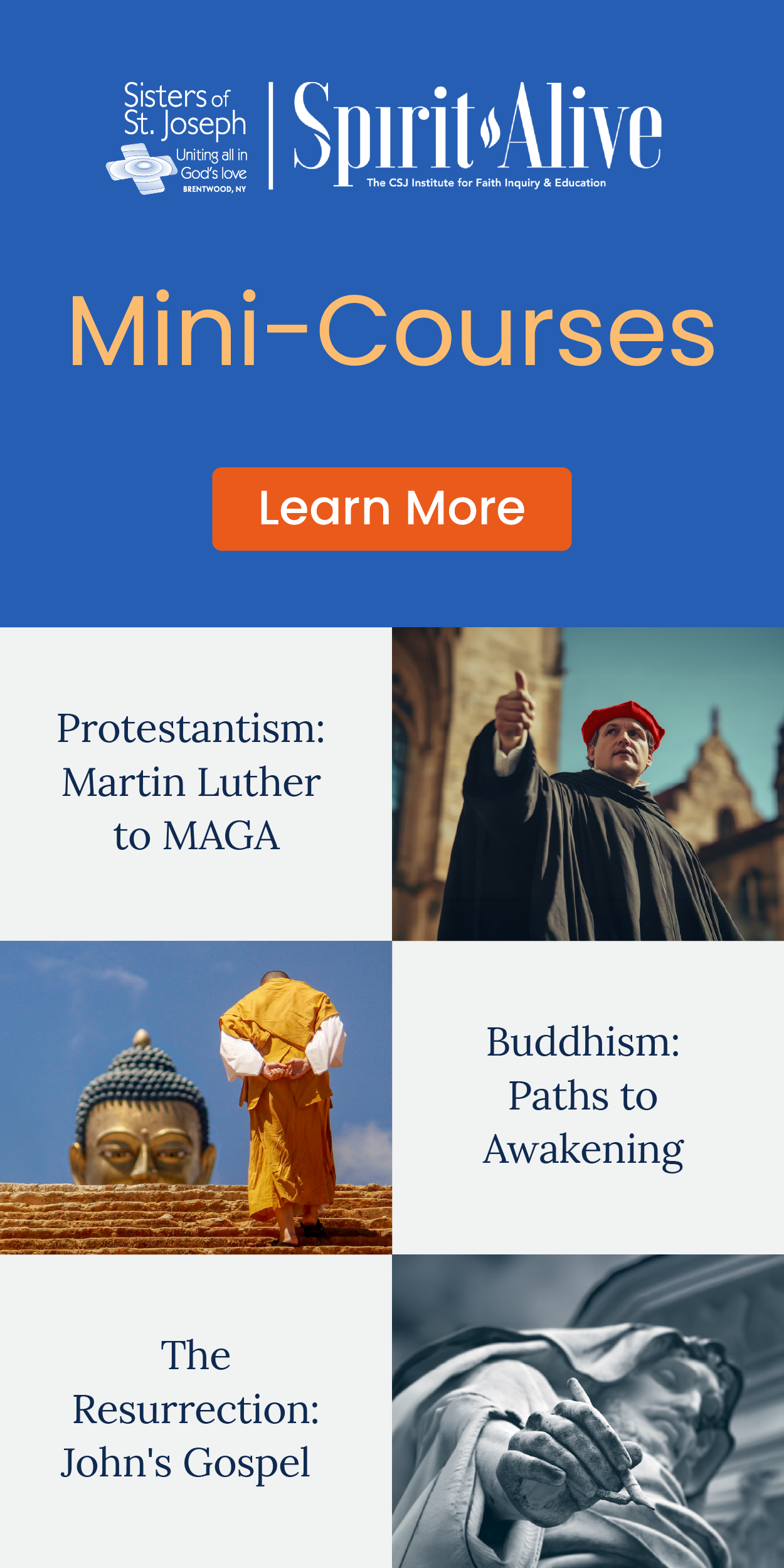Jesus called his disciples to love their enemies, to be abundantly merciful, to repent and forgive, and to offer no violent resistance to those who do evil. But he also modeled nonviolence by actively confronting injustice and violence, as when he defied the Sabbath laws to heal the disabled, confronted unjust power at the Temple, challenged a throng of assailants accusing a woman of adultery, and, on the night before he died, commanded Peter to put down his sword. Neither passive nor weak, Jesus’ nonviolence is the power of love in action for the well-being of all.
Imagine nurturing a new identity as nonviolent people in a nonviolent church with a clear and deliberate commitment to preaching, teaching, activating, and boldly proclaiming Jesus’ nonviolence at every level. We must return good for evil, break the chains of escalatory violence and revenge, stand up to systemic injustice not with violence but with determined love, and fully trust the God of love and truth rather than the power of violence. And if the theology and spirituality of gospel nonviolence were more deliberately integrated into the life of the church, we would more clearly recognize the sacred way and work of peace, reconciliation, and nonviolent transformation in our time of monumental crisis and opportunity.
Catholic social thought, including a growing number of recent papal statements and church documents, has increasingly articulated the centrality of gospel nonviolence. As Pope Benedict XVI put it in a 2007 homily, “Nonviolence, for Christians, is not mere tactical behavior but a person’s way of being, the attitude of one who is convinced of God’s love and power, who is not afraid to confront evil with the weapons of love and truth alone. Loving the enemy is the nucleus of the ‘Christian revolution.’ ” In the same address, the pope declared that nonviolence “does not consist in surrendering to evil—as claims a false interpretation of ‘turn the other cheek’ (Luke 6:29)—but in responding to evil with good (Romans 12:17–21), and thus breaking the chain of injustice.” This and many other recent papal declarations—including Pope Francis’ 2013 statement that “faith and violence are incompatible”—have helped increase the church’s awareness of the nonviolence of Jesus.
In its first three centuries, the church wagered that Jesus was utterly serious when he said “love your enemies” and “peace be with you” and therefore consistently sought to embody the way and discipline of spiritually grounded nonviolence. Now, facing our turbulent age of global violence, searing injustice, and catastrophic climate change, we are dramatically invited again to recenter our lives and our church in the spirituality and practice of the nonviolent Jesus—and to be consciously freed from the alluring temptation that violence is the answer to violence.
It is in this spirit that the Vatican’s Pontifical Council for Justice and Peace hosted the landmark Nonviolence and Just Peace conference in Rome in April 2016. Attended by bishops, priests, theologians, members of religious congregations, and laypeople from six continents, the conference called on Pope Francis to share with the world an encyclical on nonviolence and asked the Catholic Church to “recommit to the centrality of gospel nonviolence.” It urged the church to integrate Jesus’ nonviolence throughout the life of the church, promote nonviolent practices and strategies, initiate a global conversation on the power of nonviolence, and to “support and defend those nonviolent activists whose work for peace and justice put their lives at risk.”
It also urged the church to no longer use or teach the just war theory.
Nowhere is our belief in “the violence that saves” more evident than the church’s just war theology. For 1,600 years the church has reserved the right to support, and even wage, war under certain circumstances and criteria. Rooted not in the gospel but in the teaching of Roman thinkers on natural law, over the centuries just war doctrine has legitimated and justified violence, sometimes for less than seemly and honorable reasons and sometimes because, it is said, there is no other way.
In addition to its comprehensive examination of Jesus’ nonviolence and an overview of the impact of active nonviolence throughout the world, the Vatican conference critiqued the just war doctrine and advanced an alternative “just peace” framework.
As part of its work, the conference directly challenged the implicit assumption that violence is justified because “there is no other way.” We live in a time when active nonviolence is proving to be a more effective way to challenge and resolve violence than violence—recent research, presented by participant Maria Stephan, has tracked “maximal” conflicts over the past century worldwide and definitively established that nonviolent strategies are twice as effective as violent ones—and a wide range of nonviolent best practices now exist that can be deployed even in the midst of intractable conflicts, including third-party unarmed accompaniment, unarmed civilian protection, peacebuilding strategies, restorative justice processes, social-movement building, and solidarity.
There are no guarantees that nonviolence will in every case immediately end violence or injustice. But at the same time, violence cannot guarantee this either. Active nonviolence trumps violence in its ability to more often than not create alternatives, to mobilize people power, and to address the deeper roots of the conflict rather than simply suppress or obliterate one or another party. Speaking broadly, the just war doctrine hinders the discovery of new practices and stymies the emergence of an overarching culture of nonviolence and just peace.
In a world where violence is so prevalent, so systematically woven through our lives and societies, so normal, we will be called to a determined, risky, and courageous formation process as people and church. We will be called to confess our violence, make amends for our violence, and give up our deeply-embedded belief in violence, what the late scripture scholar Walter Wink called our “myth of redemptive violence.” As Christians, our best contribution to this worldwide process is to reclaim the vision and mission of the nonviolent Jesus. This will mean acknowledging our violence, relying on the God of peace and nonviolence, and bringing this power of love-in-action into the concrete life of our church and our world.
This article also appears in the February 2017 issue of U.S. Catholic (Vol. 82, No. 2, pages 20–21).














Add comment